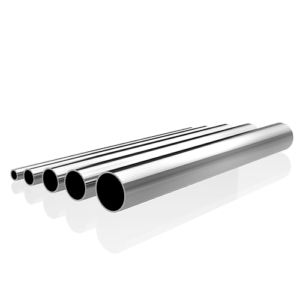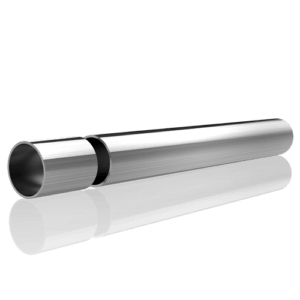Welcome to My Blog!
Before we dive into the content, I’d love for you to join me on my social media platforms where I share more insights, engage with the community, and post updates. Here’s how you can connect with me:
Facebook:https://www.facebook.com/profile.php?id=100090063158454
Now, let’s get started on our journey together. I hope you find the content here insightful, engaging, and valuable.
Introduction

Stainless steel tube steel is a versatile and high-performance material widely used in various industries due to its exceptional properties. This blog post delves into the strength characteristics of stainless steel tube steel, exploring its benefits, applications, and key factors that influence its performance. Whether you’re an engineer, a designer, or simply curious about materials, understanding the strength of stainless steel tube steel will equip you with valuable insights into this crucial material.
What is Stainless Steel Tube Steel?
Stainless steel tube steel is a type of tubular product made from stainless steel, which is an alloy of iron with chromium and other elements. The addition of chromium gives stainless steel its characteristic corrosion resistance. Stainless steel tubes are used in numerous applications due to their strength, durability, and resistance to environmental factors.
Composition of Stainless Steel Tube Steel
The strength of stainless steel tube steel can be attributed to its composition. Typically, stainless steel consists of:
- Iron (Fe): The primary component.
- Chromium (Cr): Usually between 10% and 20%, this is the key ingredient that imparts corrosion resistance.
- Nickel (Ni): Often included to enhance toughness and stability, typically ranging from 8% to 12%.
- Molybdenum (Mo): Added to increase resistance to corrosion and high temperatures, usually found in small amounts (up to 3%).
These elements combine to produce a material with excellent mechanical properties, making it ideal for various structural and industrial applications.
Key Properties of Stainless Steel Tube Steel
Understanding the strength of stainless steel tube involves exploring several key properties:
Tensile Strength
Tensile strength measures the maximum amount of tensile stress that a material can withstand while being stretched or pulled before breaking. Stainless steel tube generally has a high tensile strength, making it suitable for applications requiring high load-bearing capacity.
Typical Tensile Strength of Stainless Steel Grades
| Stainless Steel Grade | Tensile Strength (MPa) |
|---|---|
| 304 | 515-690 |
| 316 | 480-690 |
| 321 | 510-740 |
| 430 | 450-550 |
Yield Strength
Yield strength is the stress at which a material begins to deform plastically. Beyond this point, the material will not return to its original shape when the stress is removed. Stainless steel tube steel exhibits considerable yield strength, which is crucial for structural stability and durability.
Corrosion Resistance
One of the most significant advantages of stainless steel tube steel is its corrosion resistance. The chromium content forms a passive layer of chromium oxide on the surface, preventing oxidation and rust even in harsh environments.
Fatigue Resistance
Fatigue resistance is the ability of a material to withstand repeated loading and unloading cycles without failure. Stainless steel tube steel has excellent fatigue resistance, which is beneficial for dynamic applications such as in automotive and aerospace industries.
Impact Resistance
Impact resistance refers to the material’s ability to absorb energy and resist shock loading. Stainless steel tube performs well under impact conditions due to its toughness and ductility.
Factors Affecting the Strength of Stainless Steel Tube Steel
Several factors influence the strength and performance of stainless steel tube steel:
Alloy Composition
The specific alloying elements used in the stainless steel affect its mechanical properties. For example, adding molybdenum improves resistance to chloride-induced stress corrosion cracking.
Heat Treatment
Heat treatment processes such as annealing can alter the microstructure of stainless steel, thereby affecting its strength and ductility. Proper heat treatment is essential for achieving the desired properties.
Tube Dimensions and Wall Thickness
The strength of stainless steel tube also depends on its dimensions and wall thickness. Larger diameter tubes with thicker walls generally have higher strength and stiffness.
Strength vs. Wall Thickness for Stainless Steel Tubes
| Wall Thickness (mm) | Tensile Strength (MPa) |
|---|---|
| 1.0 | 500-650 |
| 2.0 | 600-700 |
| 3.0 | 650-750 |
| 4.0 | 700-800 |
Manufacturing Process
The manufacturing process, including extrusion and welding techniques, can impact the final strength of the stainless steel tube. Quality control during production ensures that the material meets required specifications.
Applications of Stainless Steel Tube Steel

Due to its strength and versatility, stainless steel tube steel is used in a variety of applications:
Construction
In construction, stainless steel tube is used for structural frameworks, handrails, and support columns due to its high strength and durability.
Automotive Industry
The automotive industry utilizes stainless steel tube for exhaust systems, chassis components, and structural elements due to its resistance to corrosion and ability to withstand harsh conditions.
Aerospace
In aerospace applications, stainless steel tube steel is employed in aircraft structures and components where strength and reliability are paramount.
Medical Devices
The medical industry benefits from stainless steel tube for surgical instruments and medical equipment because of its hygiene, strength, and resistance to bodily fluids.
Conclusion
Stainless steel tube steel is a remarkable material known for its strength, durability, and resistance to corrosion. Its various properties, such as tensile strength, yield strength, and fatigue resistance, make it a preferred choice for many industrial and structural applications. By understanding these properties and the factors that influence them, you can better appreciate the value of stainless steel tube steel in engineering and design.
FAQ
What are the main types of stainless steel used for tubes?
The most common types include 304, 316, and 321 grades. Each type offers different properties suited for specific applications.
How does heat treatment affect the strength of stainless steel tube?
Heat treatment can enhance the material’s strength, hardness, and toughness by altering its microstructure. For example, annealing can improve ductility and reduce residual stresses.
Can stainless steel tube steel be used in marine environments?
Yes, stainless steel tube steel, particularly grades like 316, is highly resistant to marine environments due to its corrosion-resistant properties.
What factors should be considered when selecting stainless steel tube steel for a project?
Consider the required mechanical properties, environmental conditions, and specific application needs, such as corrosion resistance and fatigue resistance.
How do the dimensions of a stainless steel tube affect its strength?
Larger diameters and thicker walls generally enhance the tube’s strength and stiffness. Ensure that the dimensions meet the requirements of your specific application.
